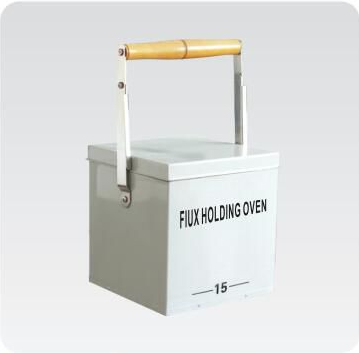A flux oven, also known as a reflow oven, is a specialized piece of equipment used in electronics manufacturing processes, particularly in surface mount technology (SMT) assembly. It plays a crucial role in soldering components onto printed circuit boards (PCBs) by heating them to a precise temperature to melt solder paste and create secure connections. The term "flux" refers to a chemical substance used to clean and promote soldering by removing oxidation and other impurities from the metal surfaces being soldered.
Here's how a flux oven works and its significance in the electronics manufacturing process:
Component Placement: Surface mount components, such as microchips, resistors, capacitors, and connectors, are accurately placed onto the solder paste-covered pads using automated placement machines.

Fiux Holding Oven
Preheat Zone: The PCB enters the flux oven, which consists of different temperature zones. The first zone is the preheat zone, where the temperature gradually increases. This helps to preheat the PCB and components, removing any moisture and preparing them for the soldering process.
Reflow Zone: The reflow zone is where the actual soldering occurs. This zone has specific temperature profiles with precise ramp-up rates, peak temperature, and dwell time. These profiles are carefully designed to ensure that the solder paste reaches its melting point, causing it to form a liquid phase.
Solder Melting and Joint Formation: In the reflow zone, the solder paste transitions from a solid to a liquid state. This allows the molten solder to form reliable and secure connections between the component leads and the PCB pads. The flux in the solder paste facilitates the soldering process by removing oxides and ensuring good wetting and adhesion.
Cooling Zone: After the soldering process is complete, the PCB enters the cooling zone. Here, the temperature gradually decreases, allowing the molten solder to solidify and form solid solder joints. The controlled cooling process prevents thermal stress and ensures the solder joints' structural integrity.
Inspection and Quality Control: Once the PCB exits the flux oven and cools down, it undergoes inspection to ensure the quality of the solder joints and overall assembly. Any defects, such as incomplete soldering or misaligned components, can be identified and corrected at this stage.
Flux ovens are critical to achieving consistent and reliable soldering results in electronics manufacturing. The precise temperature profiles and controlled heating and cooling cycles of a flux oven contribute to the formation of strong solder joints with minimal thermal stress on the components and PCB. This level of precision is essential for ensuring high-quality electronic products that meet industry standards for reliability and performance.






